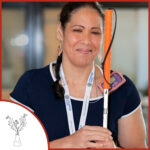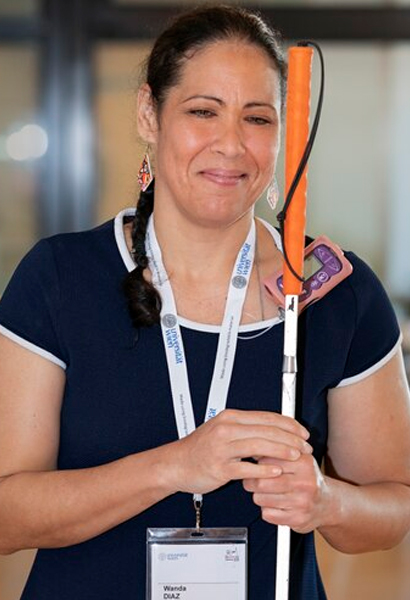

Specialty: Sonic Astrophysicist
Major Contributions:
Developed Techniques for sonification of astrophysical data
One of seven recipients of first annual European Scholarship for Students with Disabilities
Project Lead for AstroSense for International Astronomical Union’s Office of Astronomy for Development
International Astronomical Union (CC BY 4.0)
Growing up in Puerto Rico, Dr. Wanda Diaz-Merced dreamed of flying on the space shuttle and visiting distant galaxies. She began studying physics at the University of Puerto Rico, but at the age of 20, she started to lose her eyesight due to prolonged illness. Thinking she would have to give up on astronomy she found a way to continue pursuing her passion for space science.
In 2005, she was invited to take part in the Access internship program at NASA’s Goddard Space Flight Center where she would meet a computer scientist who would become a lifelong mentor. Working with him and another computer scientist they developed an application that would take astronomical data and turn it into sound.
This process, called sonification, takes numerical data and uses pitch, volume, and rhythm to distinguish between different values in the data set. The resulting sequences allow listeners to identify features such as peaks, pulses, and noisy data. By sonifying the data from radio telescopes and satellites, Diaz-Merced is able to identify changes and trends in the data stream that she characterizes with numerical analysis.
Working with this technology for a few years she became interested in the perception-psychology and computer science aspects of sonification and started working on a PhD. After earning her doctorate in computer science from the University of Glasgow, she had difficulty finding her place in the astrophysics community.
Diaz-Merced found a home at the South African Astronomical Observatory as part of the International Astronomical Union’s Office of Astronomy for Development. There she led the project AstroSense which aimed to involve anyone interested in astronomy and space science at all levels. Another portion of her work was at the Athlone School for the Blind, helping teach the students radio astronomy using sonification methods to study astronomical events.
It is her hope that she can help science be more accessible to all people regardless of their limitations and has become an advocate for a more inclusive scientific community stating, “Science should be for everyone. It has to be available to everyone because we are all natural explorers.”
Written by Angela Goad
Sources:
Women in Astronomy: The Normalcy Curve
Scientific American: Making Astronomy Accessible for the Visually Impaired
Wanda Diaz-Merced, the astronomer who listens to the stars
See Also:
NPR: Dying Stars Write Their Own Swan Songs
Star Songs: From X-Rays to Music
